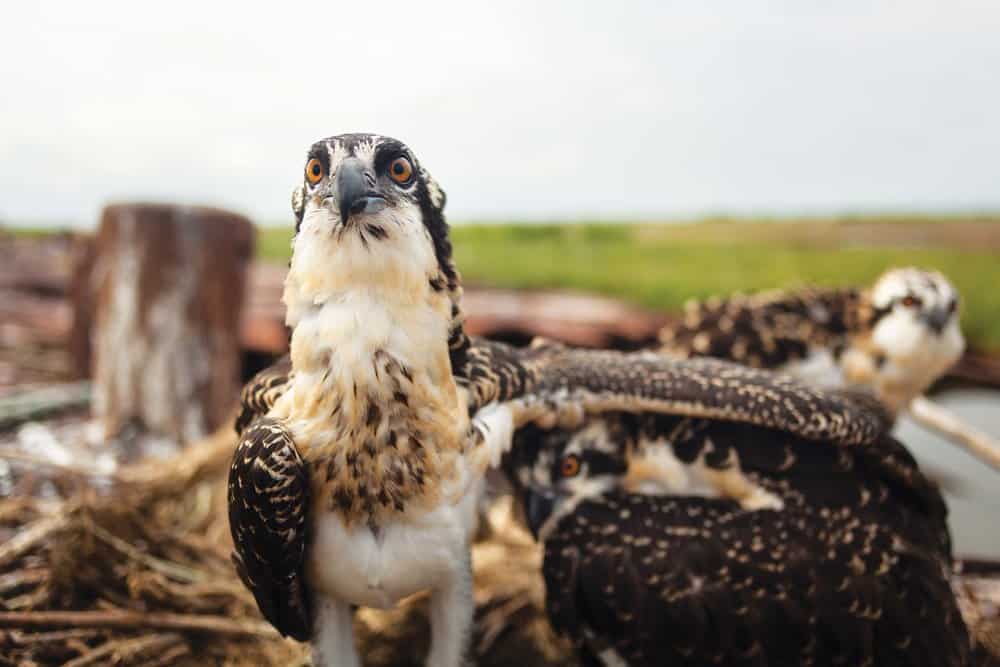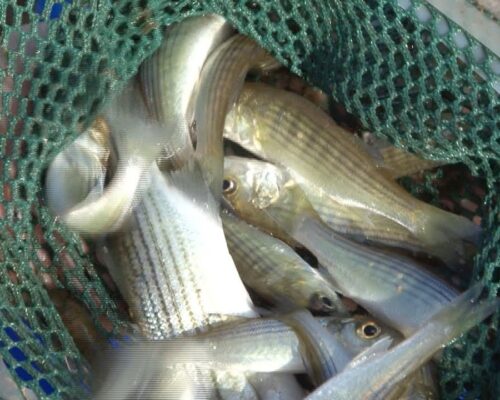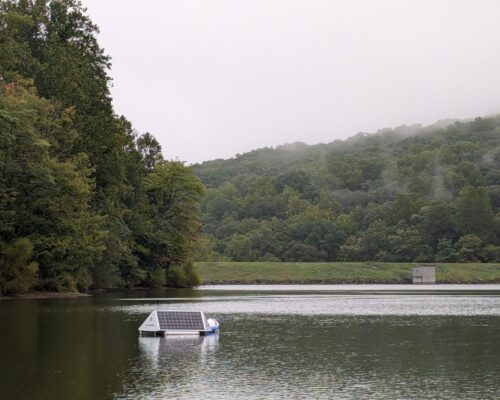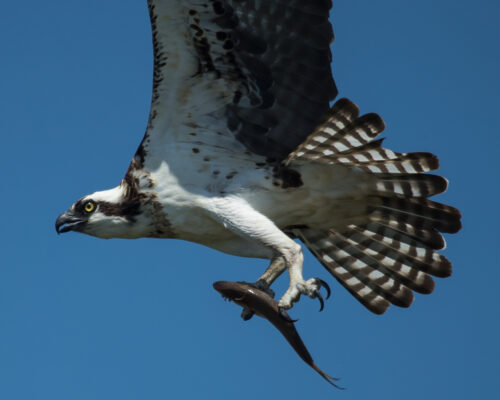Young ospreys learn survival skills
If you spend any time around an osprey nest this month, you’ll notice more high-pitched noise than usual. Better yet, if you’re following one of the Chesapeake’s osprey cams you’ve already seen the young birds leave a nest on their first series of flights. They are excited and vocal about their amazing new skill. At the age of around two months, they are nearly full-sized, and strong enough to take wing. It’s amazing to think that a complex, warm-blooded animal this large (21 to 23 inches long, 4 to 5.5 pounds with a wingspan of 5 to 6 feet at maturity) could learn to fly and fish in such a short time. We humans surely don’t mature that quickly.
Ospreys are native to all of Earth’s continents except Antarctica. Although threatened by the now-banned pesticide DDT, they have rebounded strongly since the early 1970s, especially in the Chesapeake and its rivers. The boom has been so great, in fact, that their warm-weather population here may have grown to the limit of its food supply, based on data from the Center for Conservation Biology at the College of William & Mary. Like other predatory birds and fish, they rely heavily on high-calorie first-year “peanut” menhaden, whose numbers have been depressed in recent years.
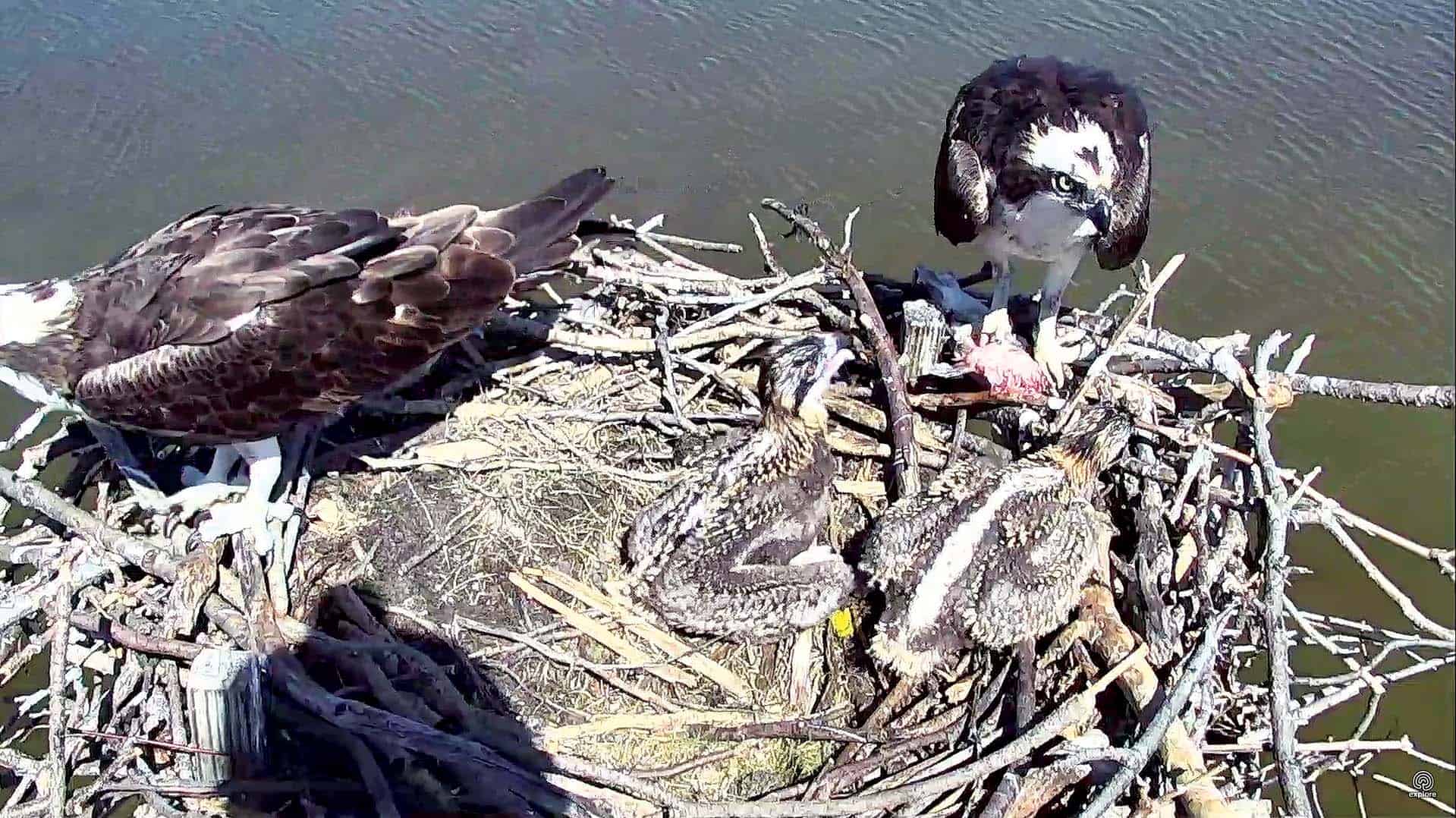
Hatching in May from eggs generally laid one to four per clutch in late March or early April, young ospreys grow through late spring and the first half of summer from tiny, awkward babies covered with streaky gray down, to near-replicas of their parents. From the first, their legs, feet, and talons are large and powerful. Their wings develop more slowly, but by late June, they begin preening and exercising them, flapping hesitantly at first, then with more confidence. As July progresses and the wings grow along with the young birds’ bodies, the nest becomes increasingly crowded by these powerful calisthenics.
A note about those nests: North America’s mature osprey pairs mate for life, and they return to rebuild the same nest every spring from their winter roosts in Central and South America. Fortunately, the birds tolerate us and are strong enough to carry modern tracking devices, so we have learned quite a lot about their amazing life cycles. At first, their nests may be only three feet or so in diameter and several inches deep, but over the ten-to-twenty years that a long-lived pair maintains and adds to their nest, it can grow up to ten feet in diameter and three feet or more in depth. The increased size with more perching room provides each year’s crop of young more space for workouts. Good thing, because older birds tend to lay larger clutches of eggs.
By late July, the young birds discover that the wing exercises can lift them off the nest a few inches, then a few feet. Soon enough, imitating their parents, they begin to leave the nest on short flights. We can only imagine how exciting it is for them to discover that they can soar, ride updrafts, and see their world from high in the air.

Then they watch their parents and other ospreys catching fish, and they begin to try for themselves. The maneuvers are intricate. The first is diving, with wings folded and feet extended at the last minute to grasp the prey with wicked-looking opposable toes and rough patches on the soles of their feet. Then they struggle to take off while maneuvering fore-and-aft to reduce air resistance as they fly. Somehow the young birds learn to stop in midair and shake themselves like puppies to dry themselves.
The more difficult maneuver involves swooping down just above the surface, swinging their legs forward just before touching the water, and grabbing a fish in passing. We’ll see the young birds practicing these maneuvers over and over, failing frequently. In fact, their parents will continue to feed them for a couple of weeks while they learn. It’s hard. Studies have shown that experienced, older birds meet success about one dive in four. No wonder the fledglings need help keeping their energy up. But what extraordinary progress they achieve at the age of three months.
By mid-August, the mature female ospreys leave, heading for their other summer in the tropics or the southern hemisphere. The adult males stay with the young as they learn and talk. They will depart around Labor Day, with the young birds finding their way south as they continue to sharpen their skills. Not all the young finish these perilous journeys, but enough succeed to keep the population going. They will stay south for a couple of years before returning to the general areas of their birth to begin playing house with prospective mates and, over a couple of years, establishing nests of their own.
For this late-summer month, enjoy all the high-pitched chatter and the antics of the young birds as they show off. Then wish them well on their journeys. They’ll be back in 2020, and we’ll see their parents as early signs of spring 2019.

